Pesto Sauce
This post may contain affiliate links. Read my full disclosure policy.
Homemade pesto sauce is easy to whip up and delicious on just about everything—from pastas and pizzas to salads and sandwiches.

One of my favorite things about summer cooking is stepping out my back door to pick fresh herbs from my potted herb garden. It always amazes me how the tiny seedlings I plant in May grow into more herbs than I can possibly use up by August. When the basil is overflowing, it’s pesto time! Pesto, or pesto alla Genovese, is a vibrant, garlicky green sauce from Genoa, Italy. While the traditional method uses a mortar and pestle, these days, a food processor makes it a breeze. This versatile sauce is fantastic on everything—from pastas and pizzas to salads, vegetable soup, and sandwiches. What’s even better? It freezes like a dream, so you can enjoy a taste of summer all year long!
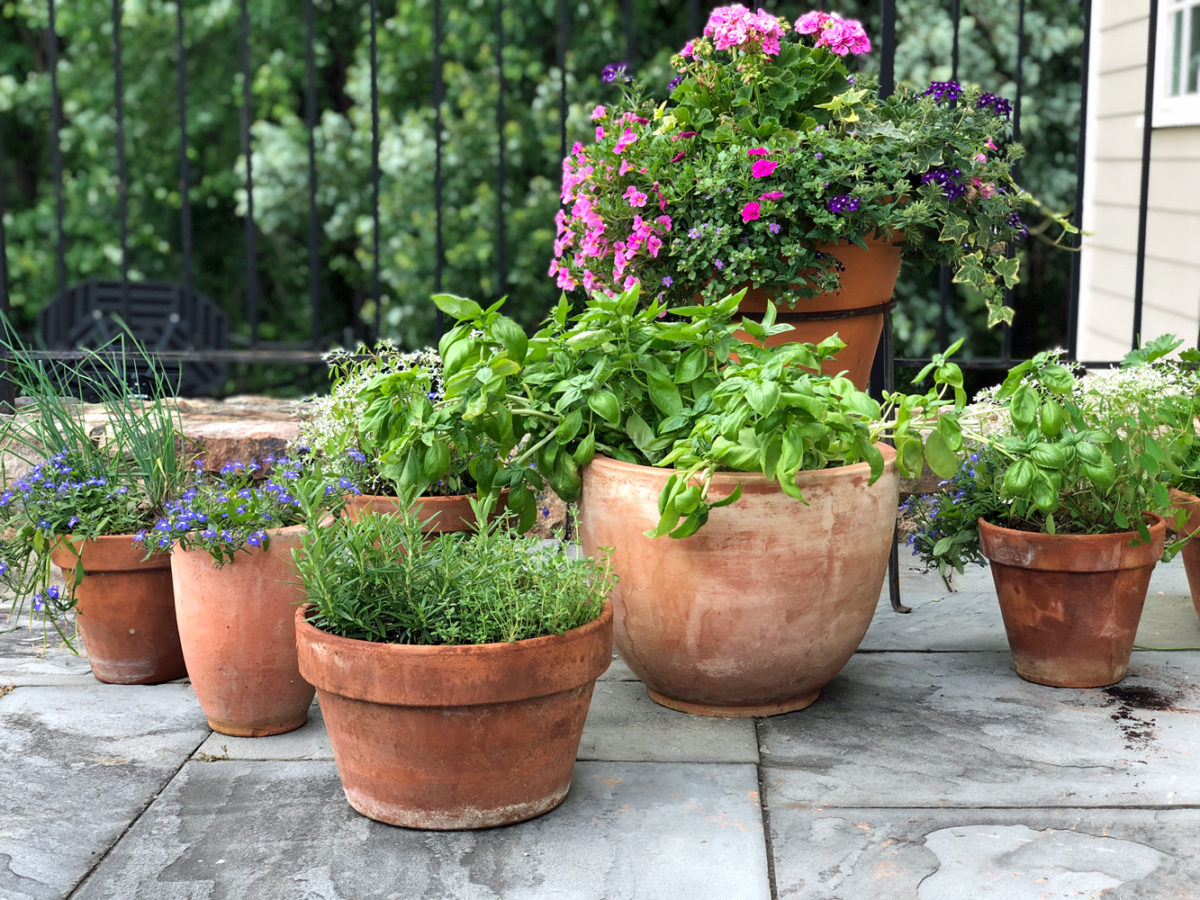
What You’ll Need To Make Pesto Sauce
Traditional pesto is made with garlic, nuts, salt, basil leaves, Parmigiano-Reggiano, and extra-virgin olive oil. It’s important to use top-quality ingredients, as the flavors really shine through.
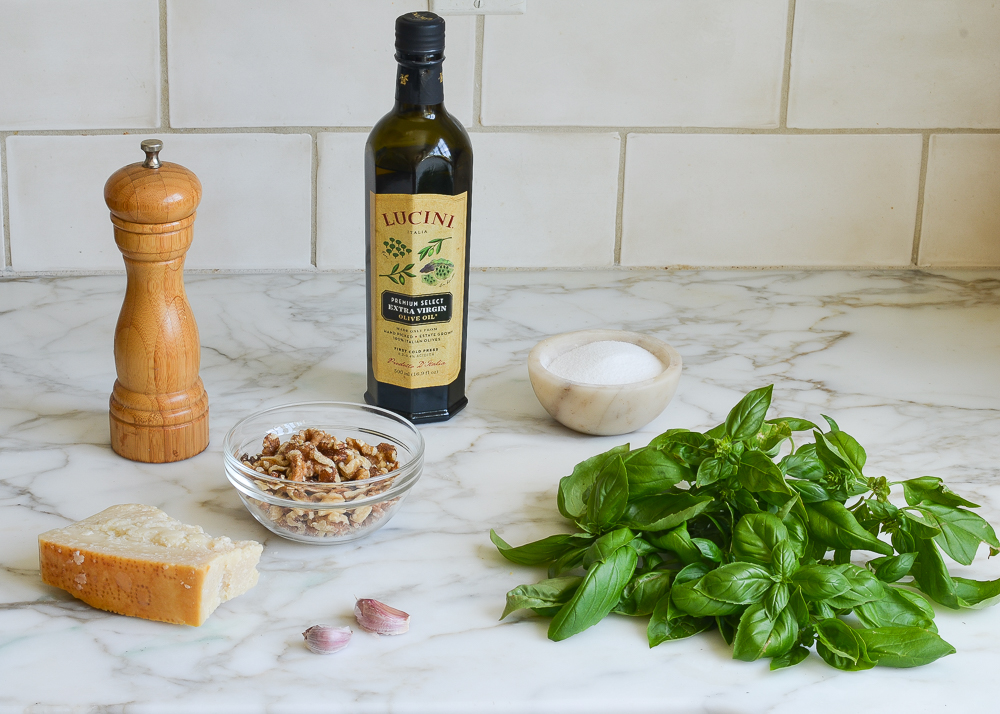
For the cheese, be sure to use authentic Parmigiano-Reggiano from Italy; domestic Parmesan is not the same thing. You can always tell if the cheese is authentic by looking at the rind, which is embossed with the name over and over. If the cheese is already grated, it should be labeled “Parmigiano-Reggiano,” not “Parmesan.”
For the nuts, I use walnuts instead of the more traditional pine nuts for a few reasons. First, I always seem to have walnuts in the house (pine nuts can be very pricey). Second, in recent years an increasing number of people, including me, have fallen prey to a bizarre problem with pine nuts called Pine Mouth Syndrome, a bitter, metallic taste in the mouth that develops a day or two after eating pine nuts. It can last for weeks and make eating or drinking anything very unpleasant. (You can use pecans or almonds, too.)
Step-by-Step Instructions
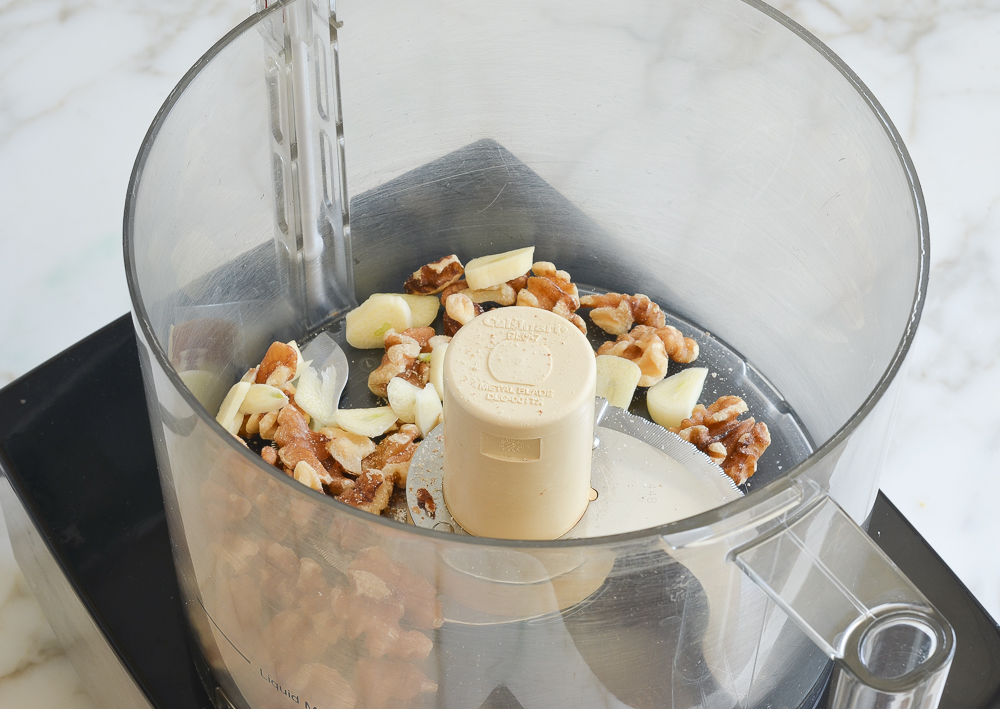
To begin, combine the walnuts and garlic in the bowl of a food processor and pulse until coarsely chopped.
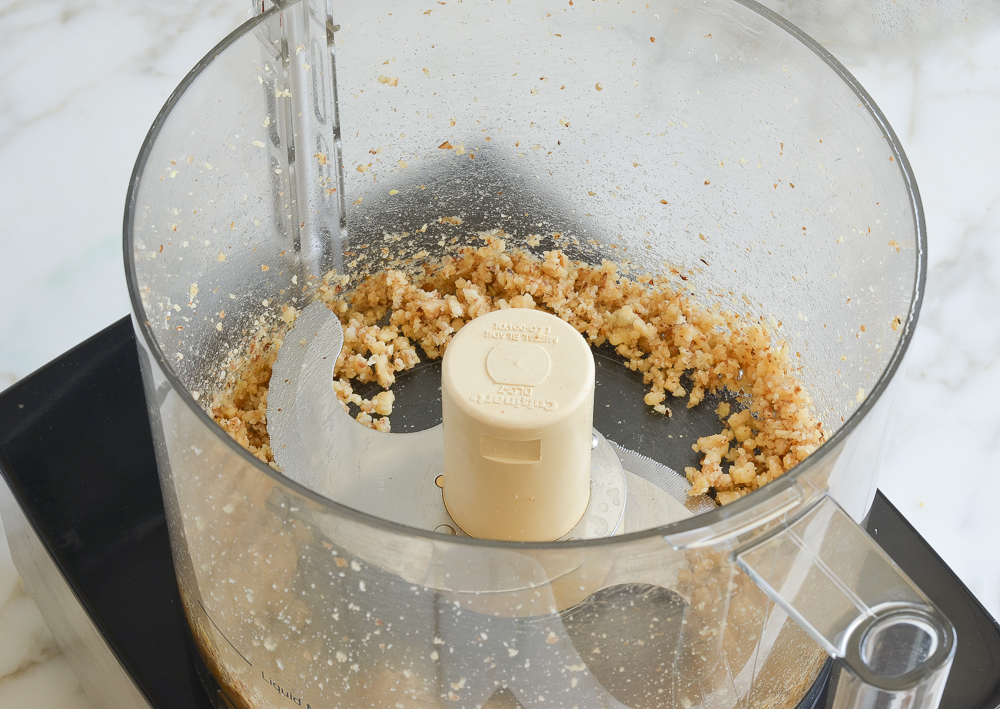
Add the basil leaves, salt, and pepper.
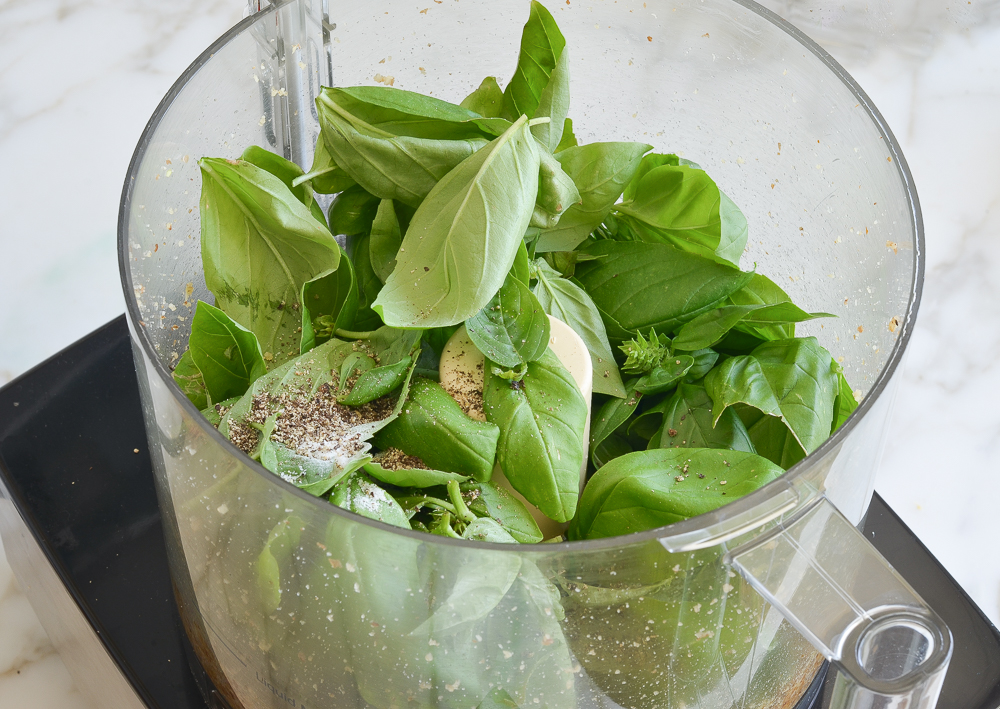
Process until finely chopped.
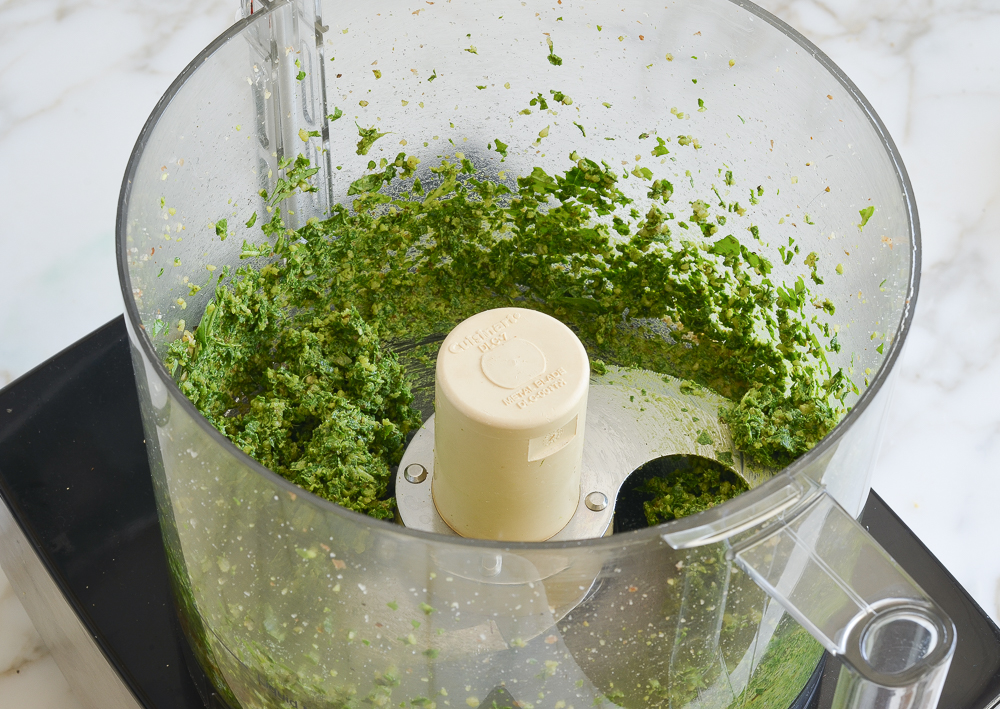
Then, with the food processor running, add the olive oil through the feed tube in a steady stream.
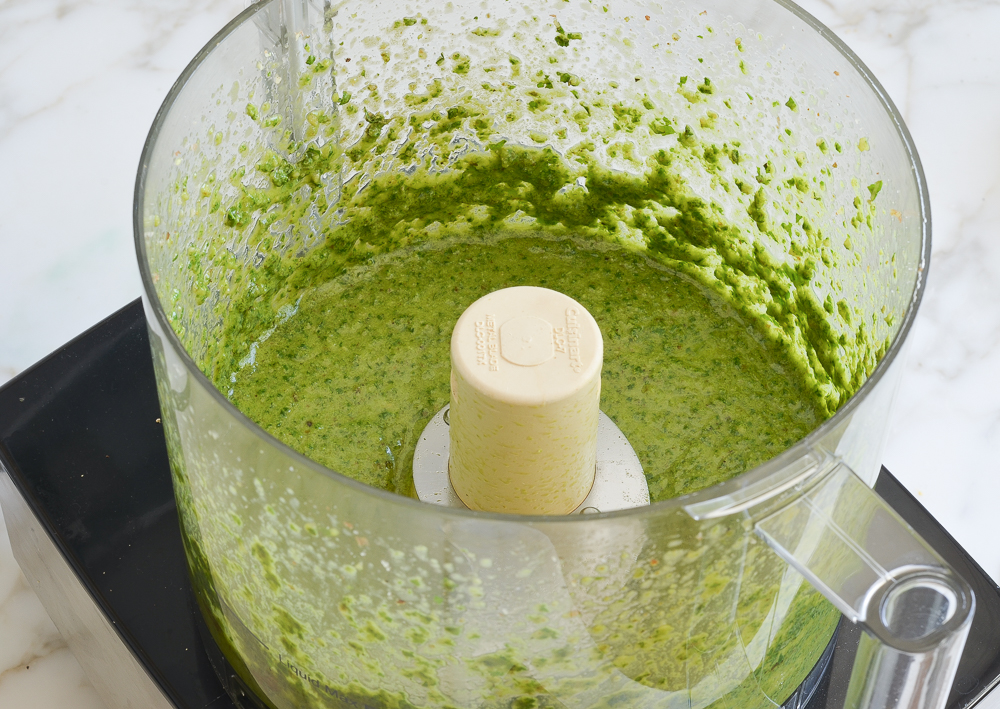
Add the Parmigiano-Reggiano.
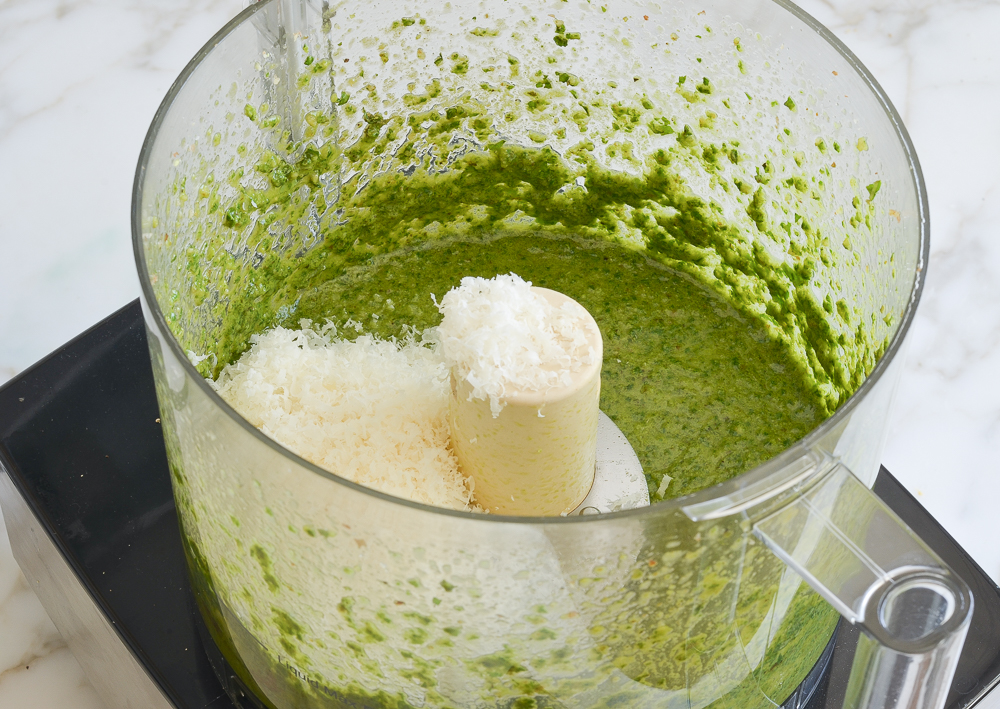
Process again until smooth, and that’s your pesto sauce.
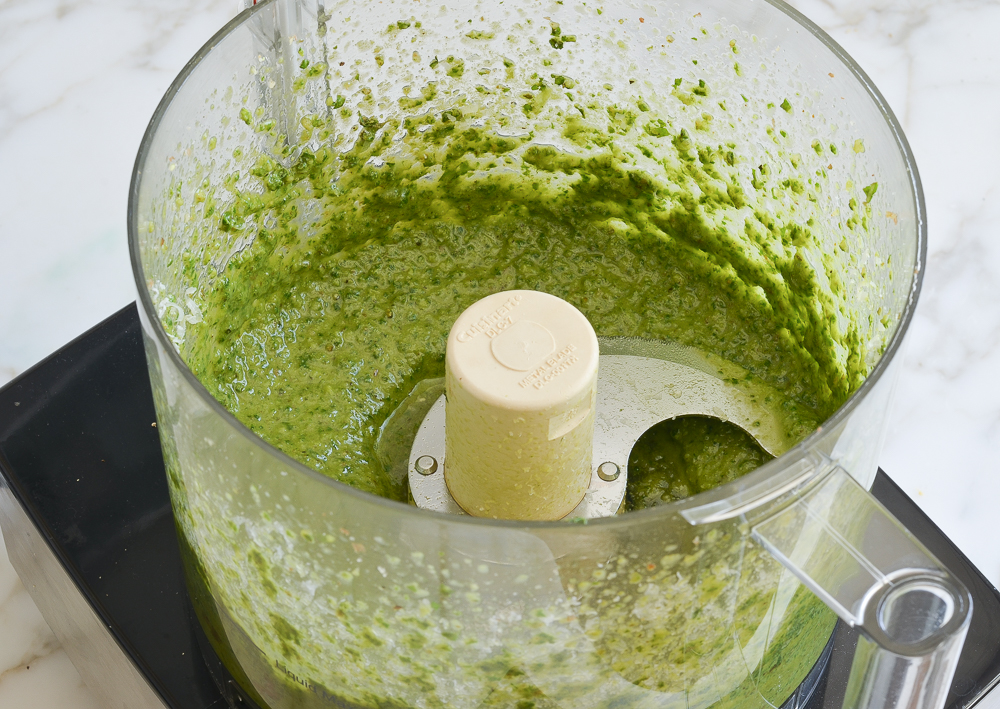
How To Store & Freeze Pesto
Use the pesto immediately or store it in a tightly sealed jar or air-tight plastic container, covered with a thin layer of olive oil (this seals out the air and prevents the sauce from oxidizing, which would turn it an ugly brown color). It will keep in the refrigerator for about a week.
Pesto can also be frozen in an airtight container for up to 6 months. I suggest dividing it into the compartments of an ice cube tray and freezing. Once frozen, remove the cubes from the tray and put in a sealable plastic bag or airtight container. You can add the defrosted cubes to vegetable soup, pasta salad with pesto, zucchini noodles, pesto pizza, eggs, sandwiches, and baked potatoes.

Video Tutorial
You May Also Like
The Best Basic Pesto
Homemade pesto sauce is easy to whip up and delicious on just about everything—from pastas and pizzas to salads and sandwiches.
Ingredients
- ⅓ cup walnuts
- 2 large garlic cloves, roughly chopped
- 2 cups packed fresh basil leaves
- ½ teaspoon salt
- ¼ teaspoon ground black pepper
- ⅔ cup extra virgin olive oil
- ½ cup grated Parmigiano-Reggiano
Instructions
- Place the walnuts and garlic in the bowl of a food processor fitted with a steel blade. Process until coarsely chopped, about 10 seconds. Add the basil leaves, salt, and pepper and process until mixture resembles a paste, about 1 minute. With the processor running, slowly pour the olive oil through the feed tube and process until the pesto is thoroughly blended. Add the Parmesan and process a minute more. Use pesto immediately or store in a tightly sealed jar or air-tight plastic container, covered with a thin layer of olive oil (this seals out the air and prevents the pesto from oxidizing, which would turn it an ugly brown color). It will keep in the refrigerator for about a week.
- Freezer-Friendly Instructions: Pesto can be frozen in an airtight container for up to 6 months. You can also divide your prepared pesto into the compartments of an ice cube tray and freeze. Once it’s frozen, remove the pesto cubes from the tray and put in a sealable plastic bag or airtight container. You can add the defrosted pesto cubes to soups, pasta dishes, eggs, sandwiches, and potatoes.
Nutrition Information
Powered by ![]()
- Serving size: 2 Tbsp.
- Calories: 159
- Fat: 17 g
- Saturated fat: 3 g
- Carbohydrates: 1 g
- Sugar: 0 g
- Fiber: 0 g
- Protein: 3 g
- Sodium: 161 mg
- Cholesterol: 4 mg
This website is written and produced for informational purposes only. I am not a certified nutritionist and the nutritional data on this site has not been evaluated or approved by a nutritionist or the Food and Drug Administration. Nutritional information is offered as a courtesy and should not be construed as a guarantee. The data is calculated through an online nutritional calculator, Edamam.com. Although I do my best to provide accurate nutritional information, these figures should be considered estimates only. Varying factors such as product types or brands purchased, natural fluctuations in fresh produce, and the way ingredients are processed change the effective nutritional information in any given recipe. Furthermore, different online calculators provide different results depending on their own nutrition fact sources and algorithms. To obtain the most accurate nutritional information in a given recipe, you should calculate the nutritional information with the actual ingredients used in your recipe, using your preferred nutrition calculator.
Gluten-Free Adaptable Note
To the best of my knowledge, all of the ingredients used in this recipe are gluten-free or widely available in gluten-free versions. There is hidden gluten in many foods; if you're following a gluten-free diet or cooking for someone with gluten allergies, always read the labels of your ingredients to verify that they are gluten-free.

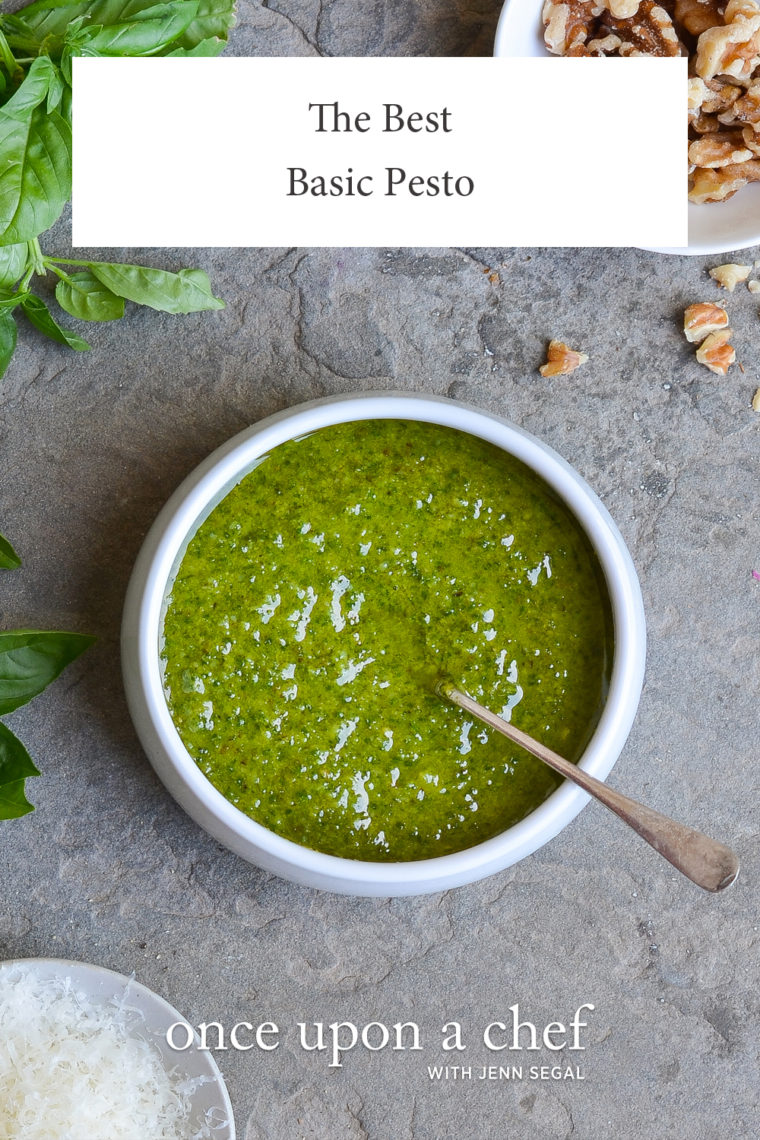
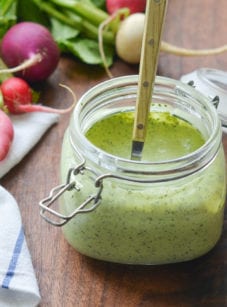
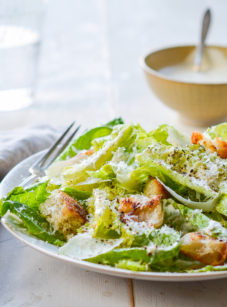

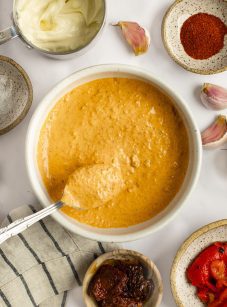
I had extra basil from another recipe so gave this a try. I put it on chicken breasts and baked them-so good the walnuts worked very well. I stole an idea from your shrimp and feta recipe and added cherry tomatoes for the last 20 minutes and it worked quite well. We enjoyed the chicken leftovers on salad!
I loved this recipe, so easy and so delicious…. I have loads of basic and needed a good pesto recipe. I make it every week until my basil freezes.. ): I’m going to make your Pesto Shrimp tonight, will let you know later about it.
Loved this I used pecans instead of walnuts. It was delicious. Just another option if Walnuts are too bitter for you. I’m glad I found your sites. It’s beautiful and the other recipes look amazing. Hope to try another one soon.
In regards to the metallic taste in your mouth after eating pine nuts from china: if they are toasted first there should not be that taste. A friend of mine is a specialty food sales rep for a spice and nut company and that is what she told me. I find it does work.
I bought a nice Walnut Olive Oil at a specialty store and have been looking for a recipe to use it in. I’d probably roast the walnuts first to give them a little more nuttiness.
What do y’all think about using that oil? Maybe I could put the parmesan cheeese in before the oil and then just make up a tiny bit with the special oil….check taste before adding to the entire batch.
I think that sounds like a good way to go, Jeanne. I’d love to hear how it turns out!
This is my go to spot for recipes, I’ve always been so pleased with how everything turned out until now. I know it’s not the recipe but rather my ingredients, however, this was inedibly bitter, went right in the garbage. Not sure what caused the bitterness? I’d like to try again, perhaps someone could shed light on what could have caused the bitterness and if there is any ingredient that could fix it in case it happens again?
Sorry to hear you had a problem with this Julie! It definitely should not taste bitter– Any chance the nuts could have been spoiled or burnt? Also, you used walnuts (and not pine nuts)?
Hi Jen! No, I used brand new walnuts that tasted good. I’ll try again. Thank you for responding, so kind of you. I looove your site and recipes and I know this one is no exception. I am so looking forward to your cookbook next spring. Happy 4th!
Hi there, Jenn’s pesto recipe is my go to. I have made it a few times without a problem, however I ran into an issue with the bitterness the last time I made it. My issue was the olive oil, as I found. I learned that by adding 1/4 cup of water or less, just enough to make a paste, while the ingredients (NOT the olive oil) are in the food processor stage. Once you get the ingredients to a paste like consistency, put the pesto in a bowl and mix in by hand the olive oil! This worked for me, I hope it solves the problem for you.
Thank you! Appreciate it.
Some olive oils are bitter. I would taste everything before you put it in, just in case.
hi Jenn, Love pesto and excited to try your recipe. Question for you – have you tried pistachios? I read this is the sicilian version. Debating them or walnuts and curious if you’ve tried both. Thanks!
Hi Janet, I’ve used both walnuts and pistachios and both are delicious; you can’t really go wrong!
I’m planning to make this tonight! I’m curious if you use raw walnuts or if you toast them first? Does it make a difference? Thanks!
El, I usually just throw them in raw, but they would be delicious toasted!
Would you make any adjustments when omitting the cheese, to boost flavor? I need the pesto to be both gluten and dairy free. Pls cfm, thanks!
Hi Kate, while I’ve never used it, I know a lot of people use nutritional yeast in place of cheese in a variety of recipes, so you may want to try that. If not, you may want to add a bit more salt to the pesto as the cheese adds a nice salty flavor.
If you were making pesto pasta, would you just pour the room temperature pesto over the hot pasta, or would you heat up the pesto?
No need to heat it up, Stacey – I’d pour it over the hot pasta in a pan (with a little bit of the pasta cooking water) and cook a few minutes to blend the flavors.
I made it last night and your suggestion worked perfectly!! Thank you so much for the tip. It was delicious!